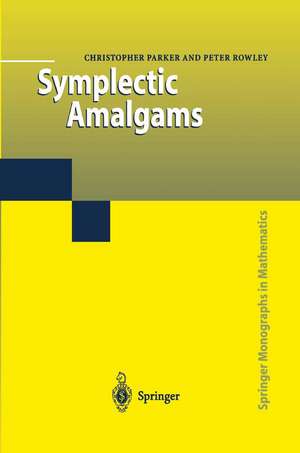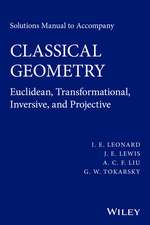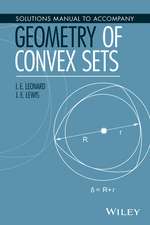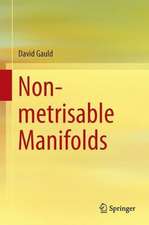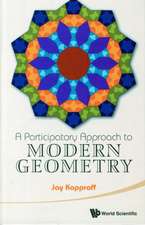Symplectic Amalgams: Springer Monographs in Mathematics
Autor Christopher Parker, Peter Rowleyen Limba Engleză Paperback – 8 oct 2012
| Toate formatele și edițiile | Preț | Express |
|---|---|---|
| Paperback (1) | 700.75 lei 6-8 săpt. | |
| SPRINGER LONDON – 8 oct 2012 | 700.75 lei 6-8 săpt. | |
| Hardback (1) | 650.86 lei 6-8 săpt. | |
| SPRINGER LONDON – 26 apr 2002 | 650.86 lei 6-8 săpt. |
Din seria Springer Monographs in Mathematics
- 20%
 Preț: 818.27 lei
Preț: 818.27 lei - 15%
 Preț: 607.33 lei
Preț: 607.33 lei - 20%
 Preț: 574.69 lei
Preț: 574.69 lei - 18%
 Preț: 753.21 lei
Preț: 753.21 lei - 24%
 Preț: 740.02 lei
Preț: 740.02 lei - 18%
 Preț: 1234.77 lei
Preț: 1234.77 lei - 18%
 Preț: 969.93 lei
Preț: 969.93 lei - 24%
 Preț: 777.43 lei
Preț: 777.43 lei - 20%
 Preț: 758.01 lei
Preț: 758.01 lei - 24%
 Preț: 1598.57 lei
Preț: 1598.57 lei - 15%
 Preț: 650.86 lei
Preț: 650.86 lei -
 Preț: 396.40 lei
Preț: 396.40 lei - 18%
 Preț: 793.14 lei
Preț: 793.14 lei - 15%
 Preț: 499.77 lei
Preț: 499.77 lei - 18%
 Preț: 1236.19 lei
Preț: 1236.19 lei -
 Preț: 391.61 lei
Preț: 391.61 lei - 18%
 Preț: 1404.30 lei
Preț: 1404.30 lei - 18%
 Preț: 797.24 lei
Preț: 797.24 lei - 18%
 Preț: 916.25 lei
Preț: 916.25 lei -
 Preț: 397.01 lei
Preț: 397.01 lei - 15%
 Preț: 657.25 lei
Preț: 657.25 lei - 15%
 Preț: 467.79 lei
Preț: 467.79 lei - 15%
 Preț: 648.05 lei
Preț: 648.05 lei -
 Preț: 406.25 lei
Preț: 406.25 lei -
 Preț: 389.88 lei
Preț: 389.88 lei - 18%
 Preț: 986.01 lei
Preț: 986.01 lei - 15%
 Preț: 649.54 lei
Preț: 649.54 lei - 15%
 Preț: 581.14 lei
Preț: 581.14 lei - 15%
 Preț: 643.48 lei
Preț: 643.48 lei - 15%
 Preț: 647.73 lei
Preț: 647.73 lei - 18%
 Preț: 902.55 lei
Preț: 902.55 lei - 15%
 Preț: 653.33 lei
Preț: 653.33 lei - 18%
 Preț: 901.88 lei
Preț: 901.88 lei - 18%
 Preț: 907.27 lei
Preț: 907.27 lei - 18%
 Preț: 893.53 lei
Preț: 893.53 lei - 15%
 Preț: 659.53 lei
Preț: 659.53 lei - 18%
 Preț: 802.28 lei
Preț: 802.28 lei - 15%
 Preț: 661.32 lei
Preț: 661.32 lei - 15%
 Preț: 646.62 lei
Preț: 646.62 lei -
 Preț: 384.48 lei
Preț: 384.48 lei - 15%
 Preț: 704.36 lei
Preț: 704.36 lei - 18%
 Preț: 1248.20 lei
Preț: 1248.20 lei - 18%
 Preț: 1031.17 lei
Preț: 1031.17 lei -
 Preț: 409.13 lei
Preț: 409.13 lei - 15%
 Preț: 640.37 lei
Preț: 640.37 lei - 15%
 Preț: 643.34 lei
Preț: 643.34 lei -
 Preț: 388.72 lei
Preț: 388.72 lei - 18%
 Preț: 965.34 lei
Preț: 965.34 lei - 15%
 Preț: 648.89 lei
Preț: 648.89 lei - 15%
 Preț: 651.34 lei
Preț: 651.34 lei
Preț: 700.75 lei
Preț vechi: 824.41 lei
-15% Nou
Puncte Express: 1051
Preț estimativ în valută:
134.12€ • 139.49$ • 112.40£
134.12€ • 139.49$ • 112.40£
Carte tipărită la comandă
Livrare economică 14-28 martie
Preluare comenzi: 021 569.72.76
Specificații
ISBN-13: 9781447110880
ISBN-10: 1447110889
Pagini: 376
Ilustrații: XI, 361 p.
Dimensiuni: 155 x 235 x 20 mm
Greutate: 0.53 kg
Ediția:Softcover reprint of the original 1st ed. 2002
Editura: SPRINGER LONDON
Colecția Springer
Seria Springer Monographs in Mathematics
Locul publicării:London, United Kingdom
ISBN-10: 1447110889
Pagini: 376
Ilustrații: XI, 361 p.
Dimensiuni: 155 x 235 x 20 mm
Greutate: 0.53 kg
Ediția:Softcover reprint of the original 1st ed. 2002
Editura: SPRINGER LONDON
Colecția Springer
Seria Springer Monographs in Mathematics
Locul publicării:London, United Kingdom
Public țintă
ResearchCuprins
1 Introduction.- 1.1 Symplectic Amalgams.- 1.2 Goldchmidt G4-Amalgam Again.- 2 Preliminaries.- 2.1 Some Group Theory Results.- 2.2 Some Representation Theory Results.- 2.3 Sesquilinear Forms.- 2.4 Two Theorems of McLaughlin.- 2.5 Ultraspecial and Extraspecial Groups.- 2.6 Tensor Products and Group Actions on p-Groups.- 2.7 The Goldschmidt Amalgams.- 3 The Structure of SL2(q) and its Modules.- 3.1 Group Theoretic Properties of SL2(q).- 3.2 Modules for SL2(q).- 4 Elementary Properties of Symplectic Amalgams.- 4.1 The Coset Graph.- 4.2 Proof of Theorem 1.6.- 5 The Structure of Q?.- 6 The L?-Chief Factors in V?.- 7 Reduced Symplectic Amalgams.- 7.1 A Reduced Symplectic Subamalgam.- 7.2 Reduced Amalgams and Consequences of Theorem 6.1.- 8 The Largest Normal p?-Subgroup of L?/Q?.- 9 The Components of L?/Q?.- 9.1 The Action of L? on Compp(L?).- 9.2 Two or more Normal Components in L?/Q?.- 10 The Reduction to Quasisimple when $$C_{U_\alpha } (U_\alpha /Z_\alpha ) \nleqslant Q_\beta$$.- 11 A First Look at the Amalgams with |V?/Z(V?)| = q4.- 11.1 A Characteristic 3 Amalgam.- 11.2 The Proof of Theorem 11.1.- 12 The Story so Far.- 13 Groups of Lie Type.- 13.1 Weyl Groups and Parabolic Subgroups.- 13.2 Sylow p-subgroups of Lie Type Groups.- 13.3 Automorphisms and Centres.- 13.4 The Order of Abelian p-subgroups.- 13.5 Extremal Subgroups.- 14 Modules for Groups of Lie Type.- 14.1 Modules in Characteristic p.- 14.2 Module Results for Low Rank Groups of Lie Type.- 14.3 Modules for Lie Type Groups and (2, q)-Transvections.- 14.4 Natural Modules for Orthogonal Groups.- 14.5 Natural Modules for the Symplectic Groups.- 14.6 Natural Modules for G2(q).- 14.7 Some Spin Modules.- 14.8 Modules for Lie Type Groups in Non-defining Characteristic.- 14.9 Some Non-containments.-15 Sporadic Simple Groups and Their Modules.- 16 Alternating Groups and Their Modules.- 17 Rank One Groups.- 18 Lie Type Groups in Characteristic p and Rank ?.- 18.1 A Subamalgam of A.- 18.2 The Examples.- 18.3 L?/Q? a Symplectic Group and V?/Z(V?) a Spin Module.- 19 Lie Type Groups and Natural Modules.- 19.1 The Symplectic and Orthogonal Groups.- 19.2 Sp4(2) — A Special Case.- 19.3 Groups of Type G2(q).- 20 Lie Type Groups in Characteristic not p.- 21 Alternating Groups.- 21.1 Large Alternating Groups.- 21.2 Small Alternating Groups.- 22 Sporadic Simple Groups.- 23 The Proof of the Main Theorems.- 24 A Brief Survey of Amalgam Results.- 24.1 Amalgam Results.- 24.2 Pushing-up.- References.- Indexs.
Caracteristici
Written by two of the world's most notable specialists in group amalgams Collates in one volume results that have previously been published in various research papers Provides a complete survey of the field, accessible to both specialists and non-specialists alike
